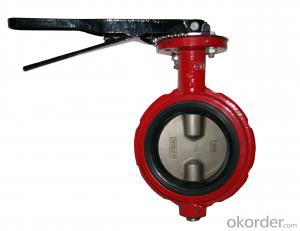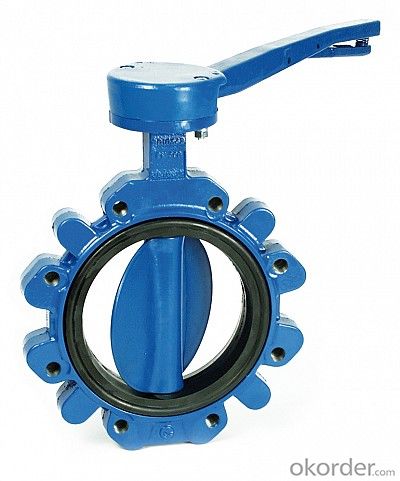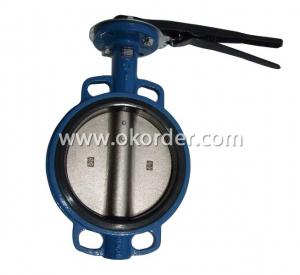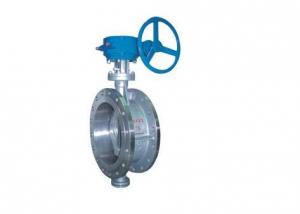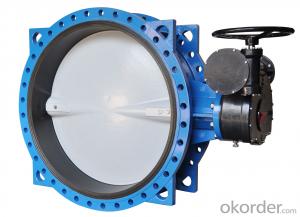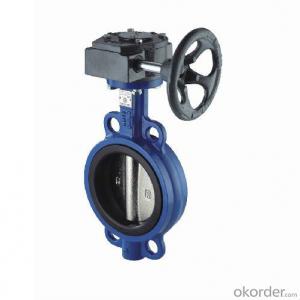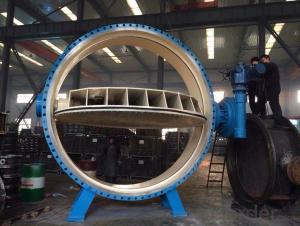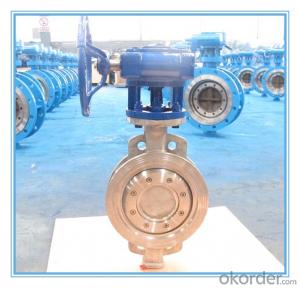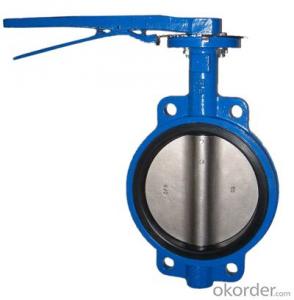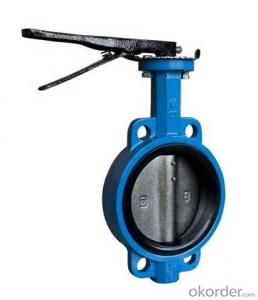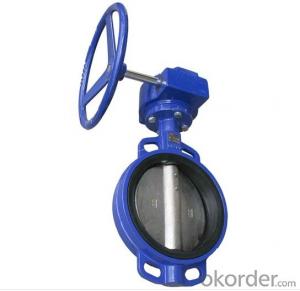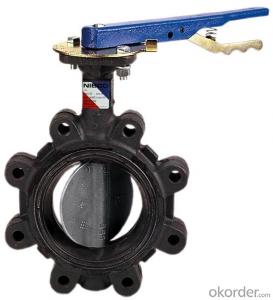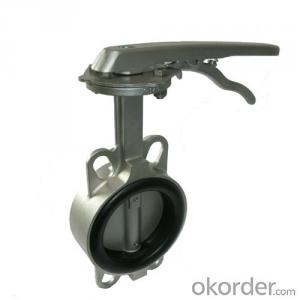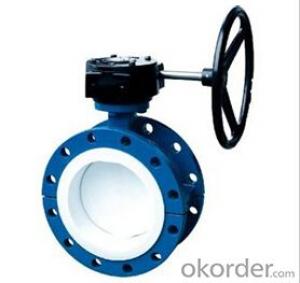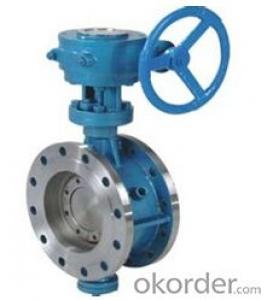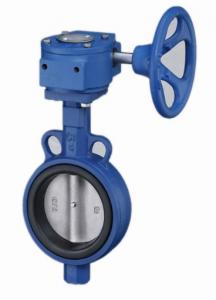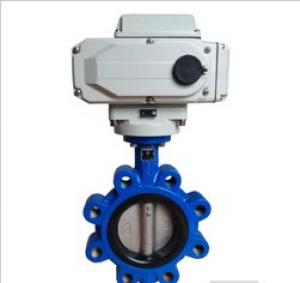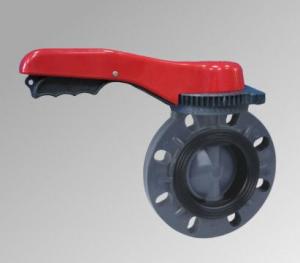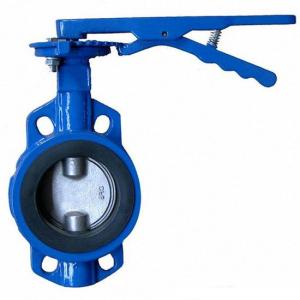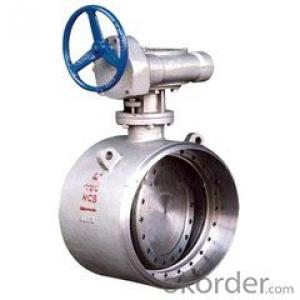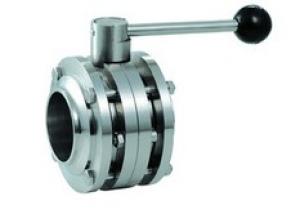Butterfly Valve DN80 Turbine Type Hand Wheel
- Loading Port:
- Tianjin
- Payment Terms:
- TT OR LC
- Min Order Qty:
- 50 pc
- Supply Capability:
- 5000 pc/month
OKorder Service Pledge
OKorder Financial Service
You Might Also Like
1. Manual Wafer Butterfly Valve Description:
A butterfly valve is a valve which can be used for isolating or regulating flow. The closing mechanism takes the form of a disk. Operation is similar to that of a ball valve, which allows for quick shut off. Butterfly valves are generally favored because they are lower in cost to other valve designs as well as being lighter in weight, meaning less support is required. The disc is positioned in the center of the pipe, passing through the disc is a rod connected to an actuator on the outside of the valve. Rotating the actuator turns the disc either parallel or perpendicular to the flow. Unlike a ball valve, the disc is always present within the flow, therefore a pressure drop is always induced in the flow, regardless of valve position.
2.Main Features of the Manual Wafer Butterfly Valve
a)Cast hole. Flange connection meet ANSI 125/150# DIN PN10/16 BS4504 PN10/16 in the meanwhile.
b)Soft seat. Replaceable. Increase of service life.
c)Double half shaft without pin.
d) Square and short neck. Easy to stick scutcheon and cost saving.
3. Manual Wafer Butterfly Valve Images:
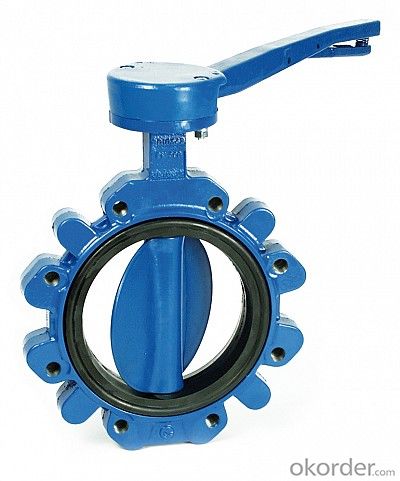
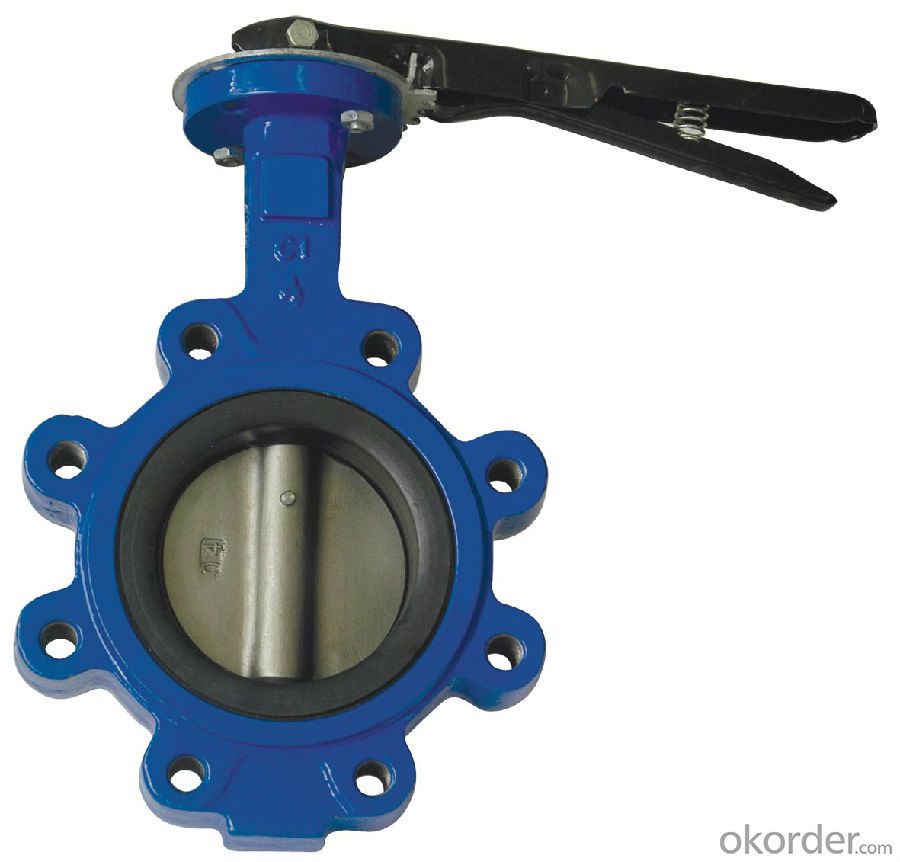
4.Manual Wafer Butterfly Valve Specification:
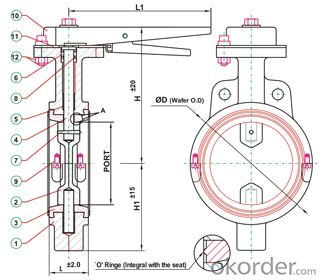
5.FAQ
1. What is manual wafer butterfly valve?
A: Wafer style is the more common of the two and is less expensive than the lug style. The wafer style butterfly valve is just about the standard. It ís so common that no one even bothers to use the word "wafer" when ordering a butterfly valve. It is taken for granted that if a butterfly valve is ordered, a wafer style will be received.
2. How about the Installation of the Wafer Style Butterfly Valve?
A: Butterfly valves are installed by inserting the valve between two flanges using bolts or studs and nuts to hold it all together. This type of installation, of course, makes it impossible to disconnect just one side of the piping system from the valve. That benefit is received using the lug style valve.
3. What is the working principle of manual wafer butterfly valve?
A: A butterfly valve is from a family of valves called quarter-turn valves. In operation, the valve is fully open or closed when the disc is rotated a quarter turn. The "butterfly" is a metal disc mounted on a rod. When the valve is closed, the disc is turned so that it completely blocks off the passageway. When the valve is fully open, the disc is rotated a quarter turn so that it allows an almost unrestricted passage of the fluid. The valve may also be opened incrementally to throttle flow.
- Q: The difference between butterfly valve and gate valve
- Its varieties and quantities are still expanding, and the development of high temperature, high pressure, large caliber, high sealing, long life, excellent regulation, as well as multi-function development of one valve. Its reliability and other performance indicators have reached a high level. Disadvantages, there is a certain resistance to the medium. Gate valves are more used in steam pipes and large diameter water supply pipelines, because of the general requirements of fluid resistance is small, the use of gate valve. Valve is hand wheel rotation, stem upward movement. Flow is not the same, the gate valve requires full open. Need a higher installation space, the valve sealing surface has a certain self sealing capacity, its spool by the media pressure closely with the valve seat sealing surface contact, to achieve tight leakage.
- Q: How big is the butterfly valve with a diameter of 80?
- With the 80 caliber butterfly valve.Also known as butterfly valve, control valve has a simple structure, can be used for low pressure pipeline valve switching control is closed parts (disc or disc) is a disk, around the valve axis to achieve the opening and closing a valve, the valve can be used to control the flow of air, water, steam steam, all kinds of corrosive medium, mud, oil, metals and radioactive liquid media and other types of fluid.
- Q: Have an iron block, aluminum heads, solid roller lifters, Jessel rocker shafts, what should my valve clearances be cold, and hot??
- Well, generally it's going to be .030 intake and exhaust (hot). Adjust to those clearances cold then recheck at operating temp. But it would really help to know year, make, cu. in., which aftermarket heads, to be absolutely sure. On some engines it is .024 intake / .030 exhaust and so on, depends on the lifters and valve train geometry.. What brand of lifters and cam profile? Usually they will specify valve lash and adjusting procedures. Edit: Wow, kinda' tight valve lash, krazybob, ( might be a lttle tough on the old cam lobes), and then there is your timing numbers / advice with absolutely no details to base it on ( H.E.I.?..which brand? / mechanical advance curve?, and vacuum advance numbers?, cam timing, brand of lifters, cam specs, rocker arm ratio)...Look, S-51D, the best idea is to Do- It- Right using the correct adjustment specs. The data is out there, once the configuration is identified.
- Q: Butterfly valve is the control valve?
- The flow characteristics of butterfly valves can be approximately equal percentage characteristics, with the positioner can do adjust, is mainly used in large caliber, straight stroke control valve more than 200 volume weight will be great, it suggests using the butterfly valve.
- Q: The water supply pipe is the gate valve And on the cross dry pipe are the gate valve? To answer the 30
- 1, this is a good question, it seems that this has not yet made a unified standard requirements, a bit confused2, personal understanding of fire water supply pipe, pipe shall be installed on the valve, because the valve is fully open all closed features of fire control system is usually required is fully open, easy management features are obvious.3, fire water supply system is also useful to butterfly valve, but mainly signal butterfly valve.The signal butterfly valve is generally installed in two parts: floor level, dry pipe, flow indicator front end, trunk pipe, wet alarm valve, front end.Floor level pipe installation is a function of the signal valve, when the floor spraying system needs repair, close the valve, open the end of the floor drain, emptying the water in the spray system, maintenance; two is the sprinkler system is not allowed inside water, when the butterfly is closed, will transmit a signal to the the fire alarm system, fire alarm system receives a monitoring signal (so called signal butterfly valve), fire sprinkler system that the floor is anhydrous state, fast repair.Wet alarm valve at the front of the signal butterfly valve with the main floor of the main role of the butterfly valve, first, maintenance, and two is the prompt sprinkler system, there is a signal butterfly valve closed, should be repaired as soon as possible.
- Q: That industry uses most of the butterfly valve, and only use the butterfly valve, a large number of use of butterfly valve, seek expert advice!
- I know there are automatic fire fighting systems and the oil industry.
- Q: Who was the first doctor to discover Pulmonary Valve Stenosis? Also, who was the first doctor to perform surgery for it? Please and thank you for your help.P.S. I have this condition.
- 1761 - Pulmonary valvar or valvular stenosis is one of the more common forms of congenital heart malformations and it has been extensively studied since the original description of pulmonary valve stenosis by John Baptist Morgagni in 1761. 1888 - Tetralogy of Fallot, first characterized by Dr.Etienne Fallot in 1888, is present in about 3000 children born each year in the United States. It is a combination of four heart abnormalities. Dodrill and his colleagues employed it with success for the open correction of a stenotic pulmonary valve in October 1952.
- Q: How to control the single acting pneumatic butterfly valve?
- Single acting pneumatic butterfly valve can be divided into gas open type and gas closed type, which is usually called "normally closed" and "normally open". This is very critical. The single feature pneumatic butterfly valve is the biggest feature of its spring reset function, when the loss of gas or sudden failure, you can automatically restore the original state. So it's important to open the air or air this time.
- Q: What is the D37-10Q butterfly valve?
- D- butterfly valve (valve type); 3- worm (drive); 7- pairs of clamp (connection); 10-PN1; nominal pressure of 10 kg; Q- ductile iron (valve body material).
- Q: What are the uses and classifications of manually operated clip butterfly valves?
- In the butterfly valve body cylindrical channel, the disc shaped butterfly plate revolves around the axis, the rotation angle is 0 degrees -90 degrees between, when rotates to 90 degrees, the valve opens the card completely. Butterfly valves are not only widely used in petroleum, gas, chemical, water treatment and other general industries, but also applied to the cooling water system of thermal power stations.
Send your message to us
Butterfly Valve DN80 Turbine Type Hand Wheel
- Loading Port:
- Tianjin
- Payment Terms:
- TT OR LC
- Min Order Qty:
- 50 pc
- Supply Capability:
- 5000 pc/month
OKorder Service Pledge
OKorder Financial Service
Similar products
Hot products
Hot Searches
